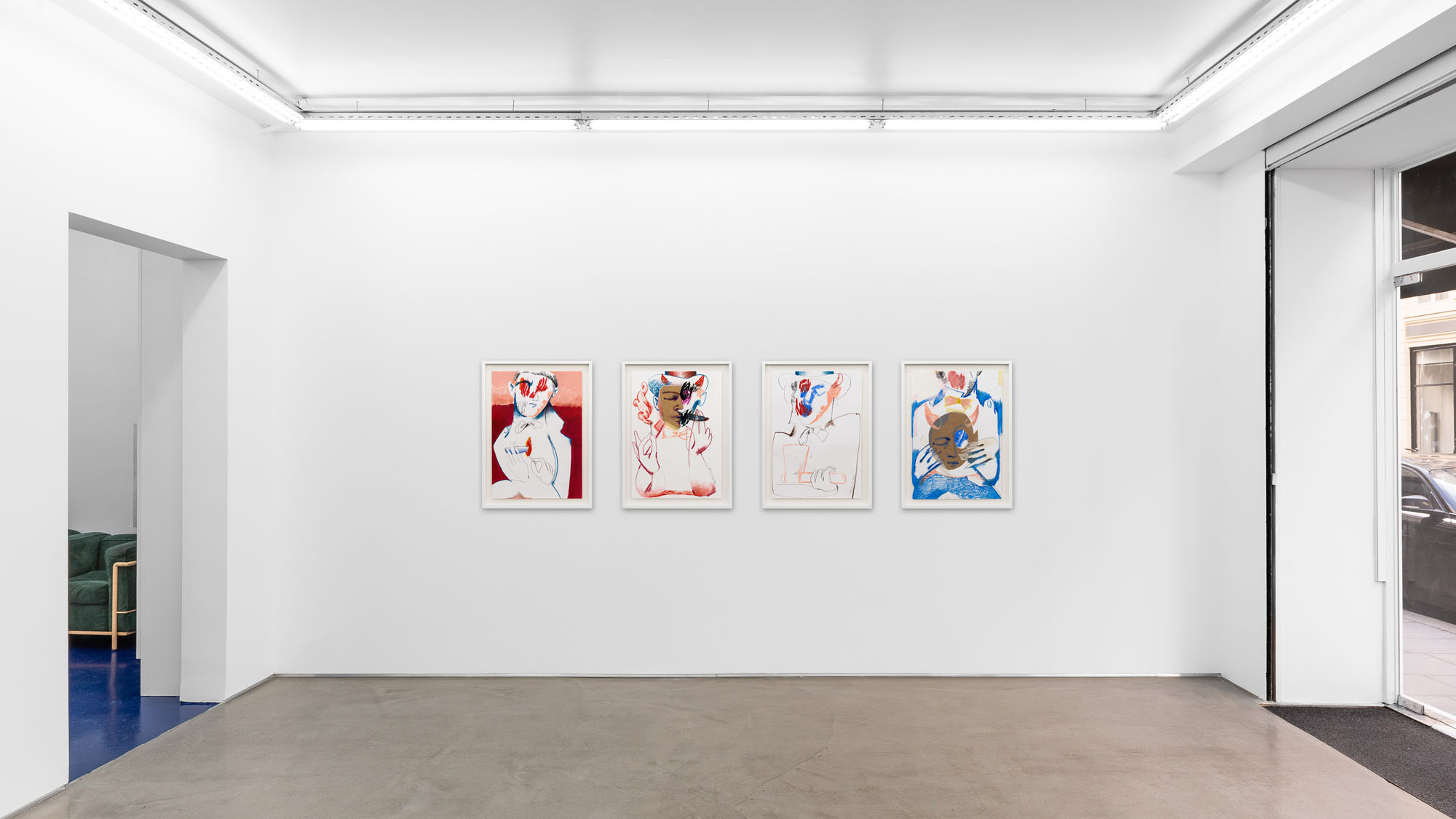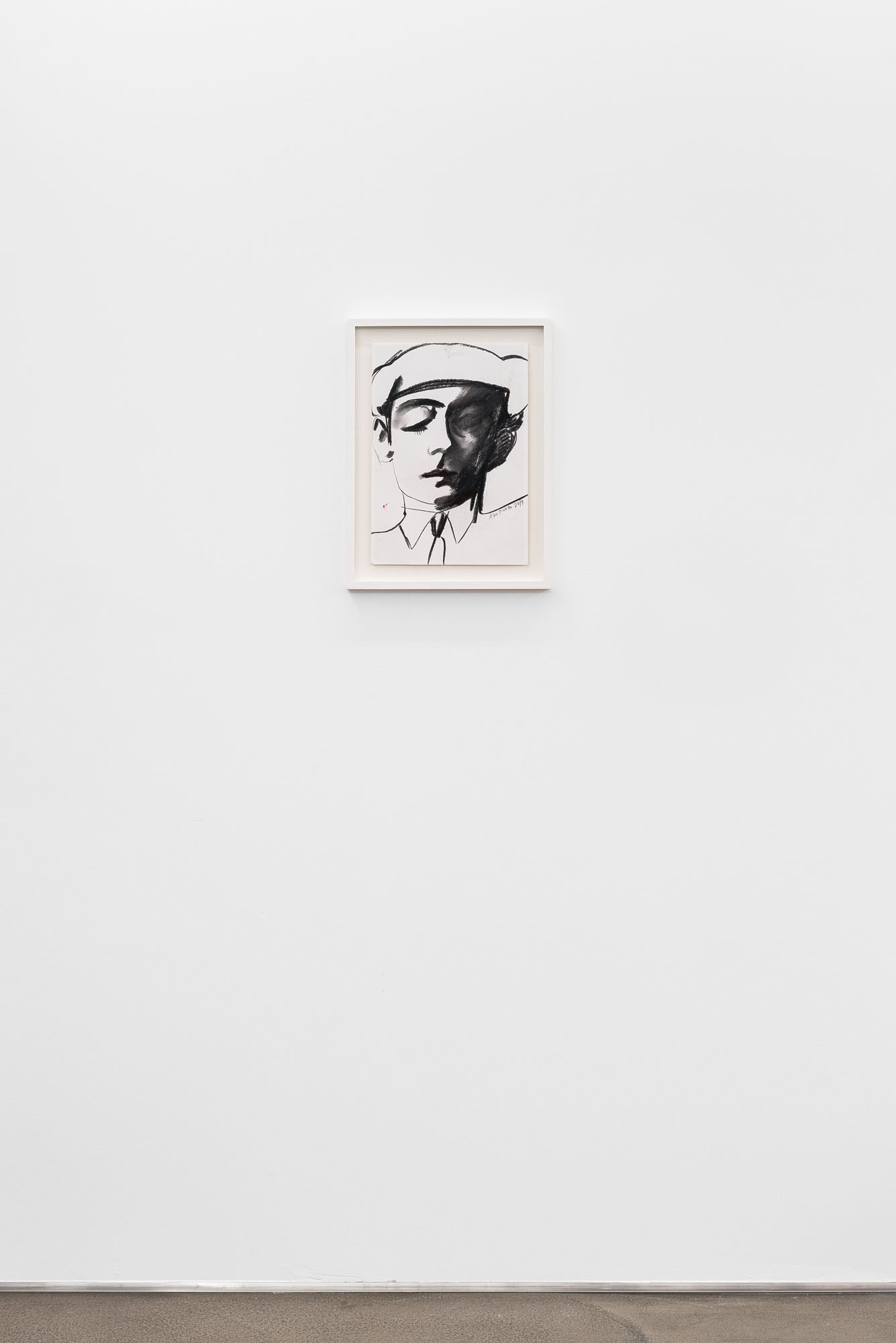Artist: Alex Foxton
Exhibition title: Whistle and I’ll come to you
Venue: Galerie Derouillon, Paris, France
Date: online, 2020
Photography: Grégory Copitet / all images copyright and courtesy of the artist and Galerie Derouillon, Paris
‘’Oh, whistle and I’ll come to you, my lad’’ summons immediately mysterious forces to our imagination. The exhibition borrows its title from a ghost story by British writer M. R. James, in which a skeptical Cambridge professor finds a mysterious whistle and blows it, releasing a malevolent being which will disturb his life. In this new series of paintings, Alex Foxton pushes himself out of habitual gestures and strict ways of composing to make something more immediate and powerful. He takes over the playful gesture of the flutist/whistle blower enjoying losing control over the material and lets immediacy, improvisation guide the composition of the paintings. The materials take over, and the painting or sculpture seems to make itself. The vibrant and deep shades of indigo shape the figures – as in The Captive (II) – setting different tones from one painting to another, and thus become the guiding thread through the series.
The characters depicted by Alex Foxton are not spooky figures of the Devil but much more complex identities. Foxton starts working from illustrations of war-time propaganda that he finds uncomfortable and tries to make something new out of them. The strength of the political motive, seeking to demonize others, is as abhorrent as the images are intriguing for their directness and visual power. The visual quality and the political meaning of the diverse European, but also Indian, Japanese and Norwegian inspirations arouse a tension that pushes the figures out of prettiness and harmony.
The imagery is mostly of soldiers and warriors and stereotypes of lazy, greedy or evil foreigners – smoking cigars, wearing fancy clothes. But there are also literal devils, hiding behind masks of politicians, or disguised as kings and queens. Alex Foxton reworks these figures to be more ambiguous, dreamlike, sexualized, sensitive, pensive. He also borrows techniques from the propaganda: enhancing sketchy, unfinished outlines and backgrounds; monochrome; back-lighting, to suggest burning fires or sunsets – as in The Torch or Enemy (sunset). Foxton gives movement and drama to the figures, but also wants to find tenderness within that drama.
Alex Foxton realizes for this exhibition his first composition of sculptures. This challenge of a new medium echoes with the impulse animating the paintings. Foxton worked the blocks with the same spontaneity and used basic tools that did not offer a lot of control but still conjured a feeling of drama and tenderness. The loss of control as well as the roughness of the carving action give an unfinished, playful and tender look to the work. The blocks are stacked like a totem pole or a child’s game, to create playful figures, men constructed out of rudimentary, primitive parts. These fragmented bodies and blocks designed as simple furniture resemble an eerie site of ruins, just as in James’ novel, in which the figures of the paintings could still live.
Marion Coindeau




































































